What is a Chip and PIN machine and how does it work?
Chip and PIN technology is the smart way to do business.
The system offers business owners and customers a safe, fast and convenient way to process payments.
Our guide covers all the basic questions about Chip and PIN machines, how they work, the different types of devices and estimated costs.
Quick Links:
> What is a Chip and PIN machine?
> How does Chip and PIN work?
> Types of Chip and PIN machines
> Countertop Chip and PIN machines
> Portable Chip and PIN machines
> Mobile Chip and PIN machines
> How much do they cost?
> When did Chip and PIN start?
> What are the benefits for Chip and PIN for businesses?
> Contact Handepay to find out more about Chip and PIN machines

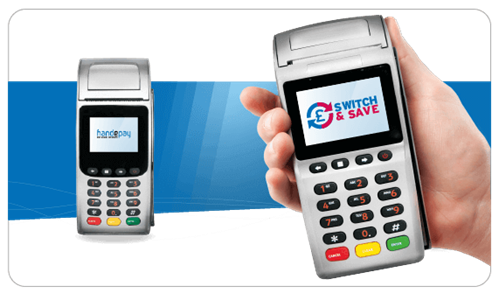
What is a Chip and PIN machine?
Chip and PIN machines are a debit and credit card payment system that process financial transactions.
These devices are able to process a payment or transaction in a swift and secure manner.
The card holder’s transaction can be completed in three easy steps:
- Insert card - when a customer is ready to make a payment, direct them to insert their debit or credit card into your card terminal
- Enter secure PIN - once the total appears on the display, your customer will be prompted to enter their unique four-digit PIN (Personal Information Number) using the keypad. This PIN is the same number that is stored on the microchip of their card
- Bank approval - once the correct PIN has been verified by the device, payment will be authorised and a receipt will be processed as proof of payment
Your customer’s payment should reflect in your business account within three to five working days.
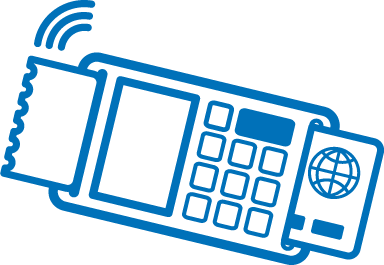
Types of Chip and PIN machines
If you’re a business owner or entrepreneur and you need to process a credit or debit card in person, then you will need a Chip and PIN machine.
There are three main types of Chip and PIN machines available: countertop, portable and mobile Chip and PIN machines.
Choosing the right type of card machine will depend on what you need it for, so we’ve elaborated on each machine’s functionality and features so that you can make an informed decision.
Countertop Chip and PIN machines
A countertop Chip and PIN machine is suitable for businesses who prefer to accept payments from a fixed location within their premises.
The device is ideal for small stores, salons or eateries where the cashier is located behind a till. The countertop Chip and PIN can process transactions from a fixed point on the premises.
The terminal requires a cable connection, which can be linked to either the phone line or Wi-Fi network.
Countertop Chip and PIN machines are always connected directly to a power supply so they don’t need to be charged, however they cannot be used away from the designated till point.
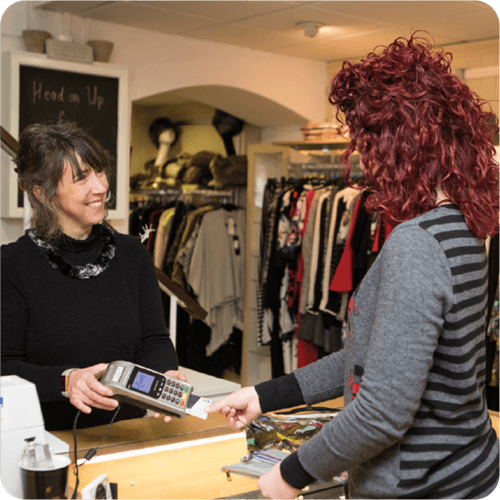
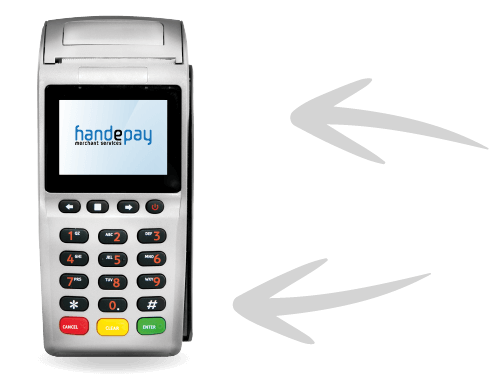
Portable Chip and PIN machines
Portable Chip and PIN machines, as the name suggests, allow the business owner or their staff to take the terminal directly to the customer via a Bluetooth or Wi-Fi connection.
The ease of convenience makes it the perfect option for restaurants and cafés who need a little more flexibility when it comes to accepting card payments.
Each portable device includes a base unit, which has to be connected to an electrical power supply in order to charge the machine. For most portable Chip and PIN machines, payments can be made up to 100m from the base unit, however this can differ depending on the model.
Mobile Chip and PIN machines
Mobile Chip and PIN machines have the advantage of being able to accept card payments almost anywhere. This type of terminal uses a built-in SIM card and roaming GPRS connection to connect to the strongest available mobile network.
The mobile option functions throughout the UK (provided the mobile connection is good) and is suitable for business owners on the go, such as travelling tradespeople and market vendors. This machine also comes with a base unit for charging.
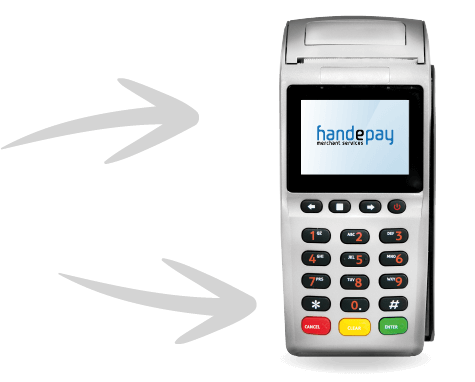
How much do they cost?
The cost of a Chip and PIN machine will depend on which device works best for your business, and the merchant provider you choose. The total cost will include the monthly price of the machine, coupled with transaction fees.
When did Chip and PIN start
Chip and PIN technology was first introduced in 2004 in an effort to deter credit card fraud.
Aiming to replace the less-secure magnetic stripe card type, Chip and PIN introduced a safer way to pay. It has since been adopted on a global scale, with card payments hugely outperforming cash in recent years.
By 2016, the UK Cards Association reported that Chip and PIN accounted for 65% of all UK card purchases (although this is slowly but surely expected to be surpassed by contactless).


What are the benefits for Chip and PIN for businesses?
Chip and PIN machines are a great benefit for businesses of all types. The technology provides a safer and more secure method of payment in the following ways:
- It’s arguably faster than handling cash - reducing wait/queue times.
- It’s also much more secure, as it alleviates the need to keep a high amount of cash on site, so to speak.
In addition to the security benefits, Chip and PIN provides added convenience.
Contact Handepay to find out more about Chip and PIN machines
Find out more about Chip and PIN machines with Handepay. We provide a variety of cost-effective card payment services for businesses.
Choose from a range of card-reading machines in our range of terminals, which all come equipped with contactless payments as standard.

Would you like
a callback?
FIND OUT MORE
Talk to an advisor today...

